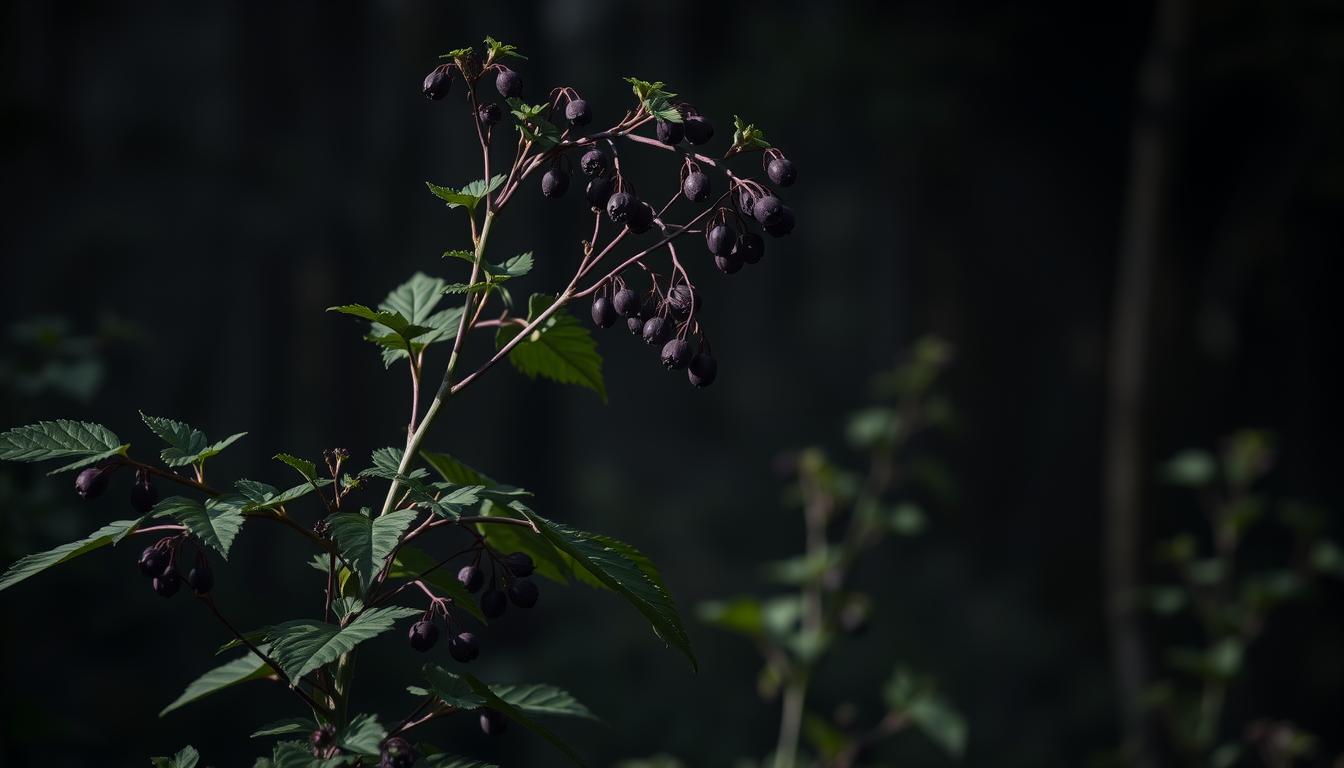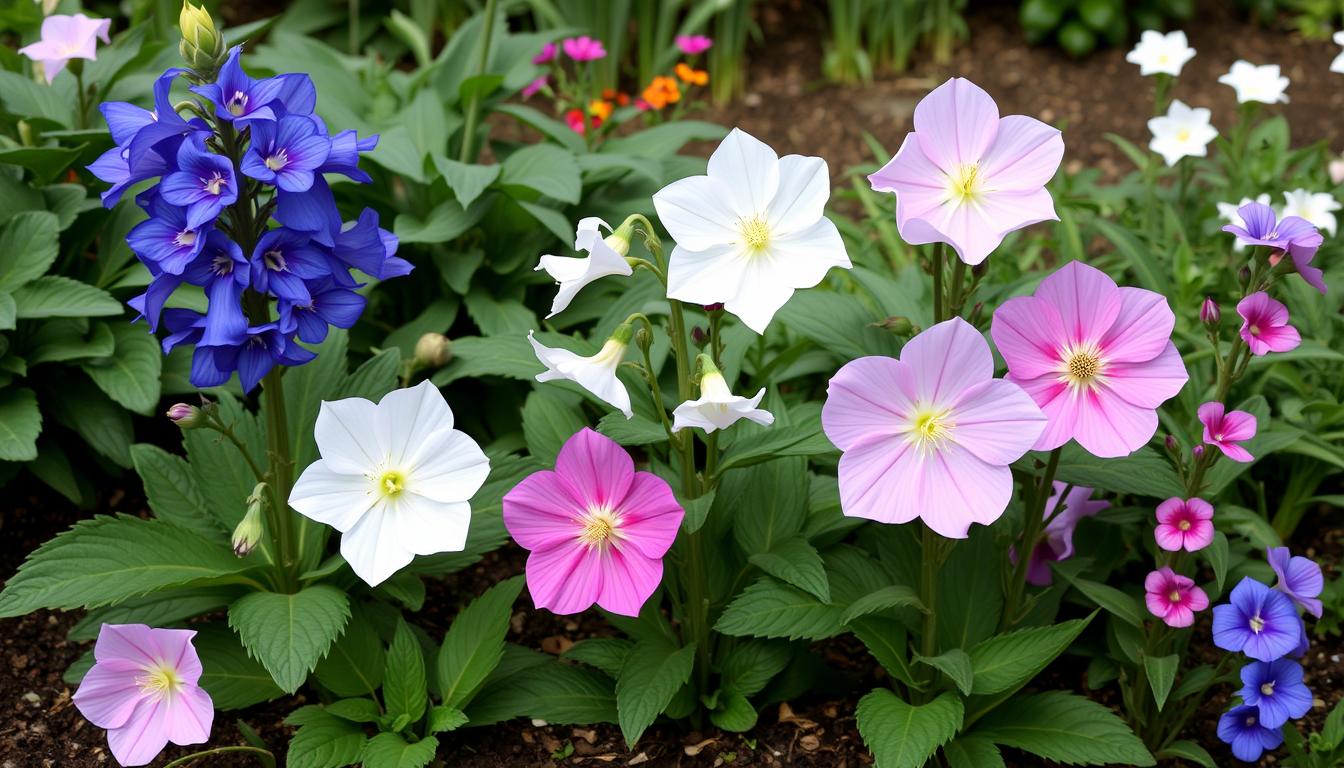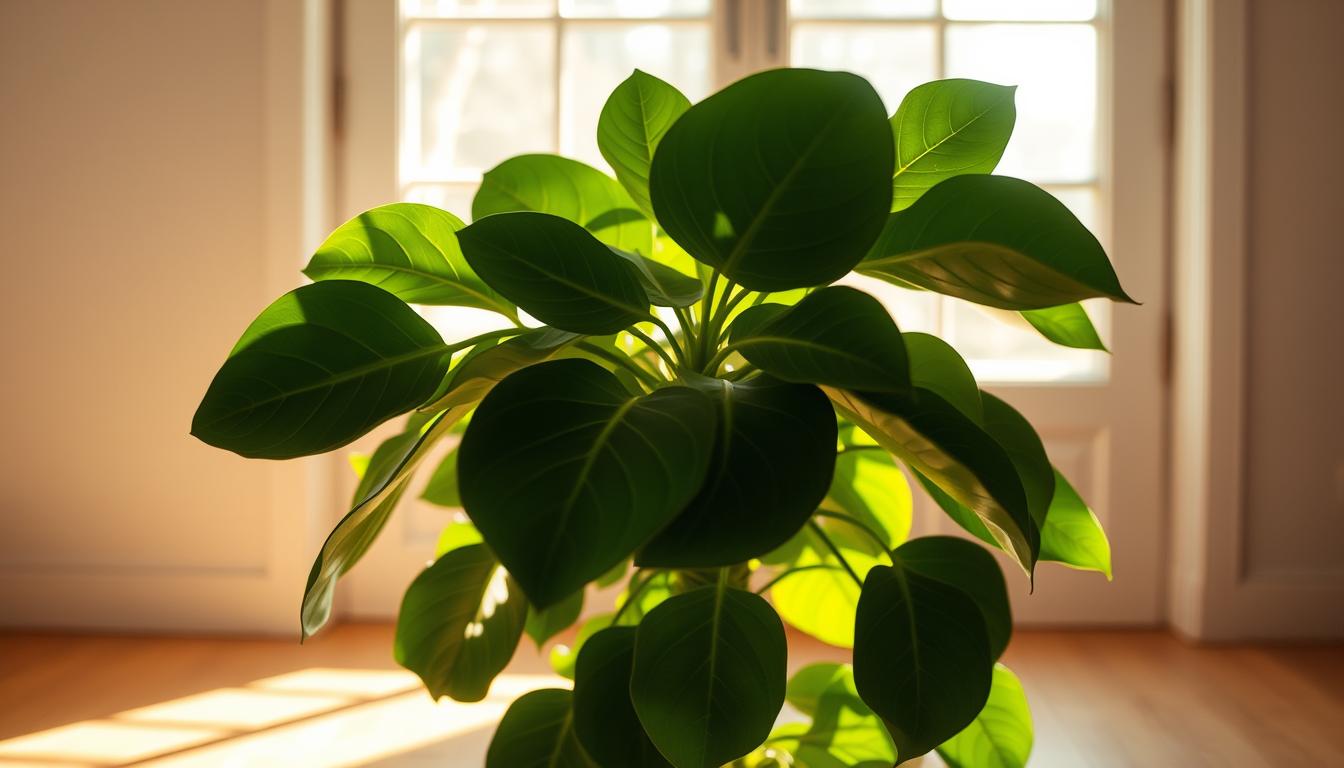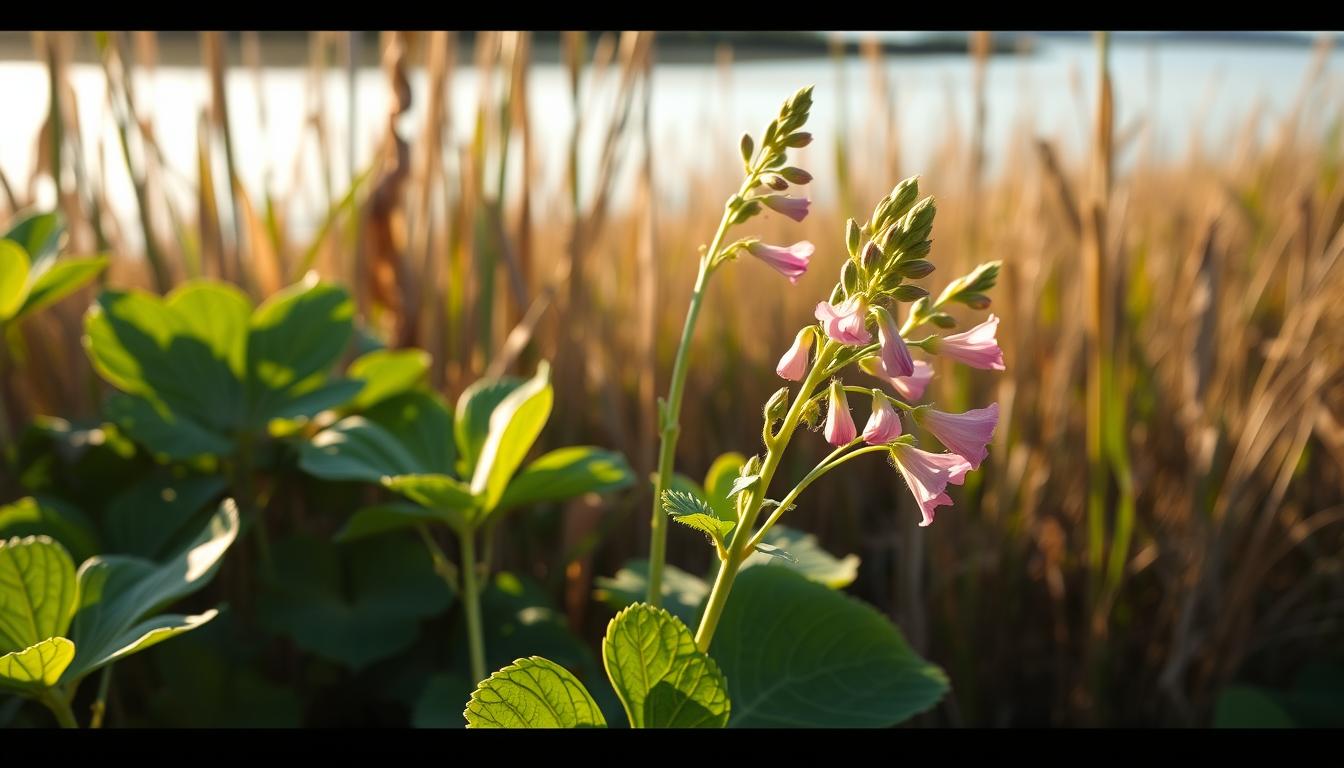Deadly Nightshade (Belladonna): Toxicity, Appearance, and Removal
“All things are poison, and nothing is without poison; the dosage alone makes it so.” – Paracelsus, the father of toxicology. This haunting truth defines the paradox of a plant that has captivated and endangered humans for centuries.
Known for its glossy black berries and bell-shaped purple blooms, this member of the Solanaceae family shares roots with tomatoes and potatoes. Yet its highly toxic nature sets it apart. Every part of the plant contains alkaloids capable of causing severe harm to humans and animals.
Originally found in Europe and Asia, it now grows wild across North America. Gardeners often mistake it for harmless shrubs, unaware of its lethal potential. The toxicity affects the nervous system within hours of ingestion, making proper identification crucial.
While historically used in medicine and cosmetics, modern science warns against any unprofessional handling. Children and pets face particular risk due to the plant’s deceptively sweet-looking berries. Authorities strongly advise against growing it near homes or parks.
This guide explores safe identification methods, ecological impact, and removal techniques. Understanding this botanical paradox – both healer and destroyer – could mean the difference between life and death in your backyard.
Understanding Deadly Nightshade (Belladonna) Basics
Sharing lineage with edible crops like tomatoes and peppers, Atropa belladonna presents a botanical paradox. This species thrives in unexpected places – from European woodlands to North American roadsides – while carrying potent toxins in every leaf and berry.
Botanical Profile and Native Regions
Classified within the Solanaceae family, this plant prefers shaded areas with rich soil. Originally found across Europe and Western Asia, it now grows wild in:
- Abandoned urban lots
- Forest edges
- Coastal regions of California and Oregon
| Region | Habitat Type | Growth Pattern |
|---|---|---|
| Native | Deciduous forests | Clustered shrubs |
| Naturalized | Roadside ditches | Spreading colonies |
| Cultivated | Medicinal gardens | Contained specimens |
Common Names and Historical Background
The scientific name reveals dual origins. Atropa references the Greek fate-severing deity, while belladonna (“beautiful lady”) nods to Renaissance eye-enhancement practices. Regional identifiers include:
| Common Name | Region | Feature Referenced |
|---|---|---|
| Devil’s Cherry | England | Berry appearance |
| European Bittersweet | France | Contrasting flavors |
| Climbing Nightshade | North America | Growth habit |
Historical records show 16th-century Italian women used diluted berry juice to create fashionable wide-eyed stares. Modern pharmacology still studies its alkaloids for controlled medical applications.
Toxicity and Effects on the Nervous System

The plant’s danger lies not in its appearance but in its biochemical arsenal. Three potent compounds – atropine, hyoscyamine, and scopolamine – disrupt nerve signaling by blocking acetylcholine receptors. This interference creates a domino effect across the nervous system, altering both physical and mental functions.
Hazardous Alkaloids and Their Impact
These alkaloids act as anticholinergic agents, effectively paralyzing the body’s communication network. Atropine specifically targets muscles and glands, while hyoscyamine amplifies heart rate and reduces bodily secretions. The table below details their primary effects:
| Compound | Primary Action | Resulting Symptom |
|---|---|---|
| Atropine | Blocks nerve impulses | Dry mouth, blurred vision |
| Hyoscyamine | Accelerates heart rate | Racing pulse, agitation |
| Scopolamine | Disrupts brain signals | Hallucinations, confusion |
Symptoms and Risks for Humans and Pets
Initial signs appear within 15 minutes of consumption. Adults may experience flushed skin and rapid speech before progressing to hallucinations. Children and pets show faster symptom onset due to smaller body mass:
- Stage 1: Dilated pupils, excessive thirst
- Stage 2: Loss of balance, slurred speech
- Stage 3: Respiratory distress, paralysis
As few as 10 berries prove fatal for adults. For children or animals, 3-5 berries can trigger cardiac arrest. Immediate medical intervention becomes critical once symptoms manifest, as paralysis may inhibit breathing within hours.
Identification and Appearance of the Plant

Accurate identification hinges on observing specific growth patterns and features. This bushy perennial forms dense clusters 3-4 feet tall, with reddish-green stems covered in fine hairs. Its structure often confuses observers, resembling non-toxic shrubs found in wooded areas.
Distinctive Features: Leaves, Flowers, and Berries
The leaves display irregular sizing, ranging from 3-10 inches long. Lower stems bear single oval-lanceolate foliage, while upper branches feature paired dark green leaves. This alternating pattern helps distinguish it from lookalike species.
From June through September, bell-shaped flowers emerge with dull purple petals and green undertones. These mildly fragrant blooms develop where leaves meet stems. By late August, they transform into shiny black berries resembling cherries, each measuring ¾ inch across.
Common Misidentifications and Similar Species
Several plants share visual similarities but lack toxicity risks. Twinberry honeysuckle often causes confusion but shows critical differences:
| Feature | This Plant | Twinberry Honeysuckle |
|---|---|---|
| Berries | Single, glossy black | Paired, smaller with red leaves |
| Flowers | Purple-green bells | Yellow tubular clusters |
| Growth | Upright shrub | Vining habit |
Wild blueberries and sweet cherries also mimic the fruit, but grow on different plant structures. Always check flower color and leaf arrangement before handling unknown vegetation.
Safe Removal and Handling Precautions

Handling this toxic flora demands military-grade caution. One brush with leaves or stems can transfer dangerous compounds through skin contact. Proper protocols protect both people and surrounding vegetation from contamination.
Protective Gear and Proper Tool Sanitization
Outfit yourself like a hazmat technician before approaching the plant. Essential equipment includes:
- Nitrile gloves under leather work gloves
- Long-sleeved shirts and pants sealed at wrists/ankles
- Safety goggles or face shield
Sanitize shovels and pruners before and after use. Mix 1 cup bleach per gallon of water for disinfecting tools. Always wear waterproof gloves during cleaning to avoid chemical burns.
Removal Techniques and Disposal Methods
Excavate the entire root mass using a sharp spade. Even pencil-sized roots left underground can regenerate. Place all plant parts in heavy-duty trash bags – never compost or burn them.
Wash work clothes separately in hot water with detergent. Monitor the garden area weekly for new shoots. Treat regrowth with glyphosate applied directly to young leaves using a disposable brush.
“Safety isn’t expensive – it’s priceless,” as industrial safety manuals state. Following these steps prevents accidental exposure while reclaiming your outdoor space from this persistent hazard.
Historical Uses and Medicinal Perspectives
This plant’s story weaves through beauty rituals and healing traditions. Its Italian name, meaning “beautiful woman,” hints at Renaissance cosmetic use. Women applied berry juice to dilate pupils, believing enlarged eyes signaled attractiveness.
Cosmetic and Folkloric Applications
Ancient Greek surgeons used extracts to numb patients during procedures. Roman priests consumed small doses to induce visions during ceremonies. Folk remedies once treated everything from joint pain to witchcraft fears.
Modern Therapeutic and Diagnostic Roles
Today, controlled doses help manage muscle spasms and digestive issues. Eye doctors still use diluted solutions to temporarily dilate pupils during exams. Research explores its potential in Parkinson’s disease treatments.
Birds feast on the berries without harm, spreading seeds through droppings. This natural dispersal explains why plants often appear near bird feeders or wooded areas. While modern medicine harnesses its power cautiously, the Atropa belladonna remains a reminder of nature’s dual gifts – healing and harm growing side by side.



